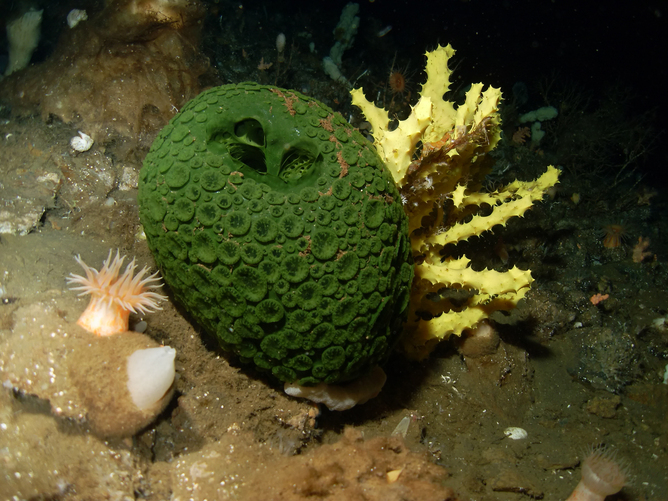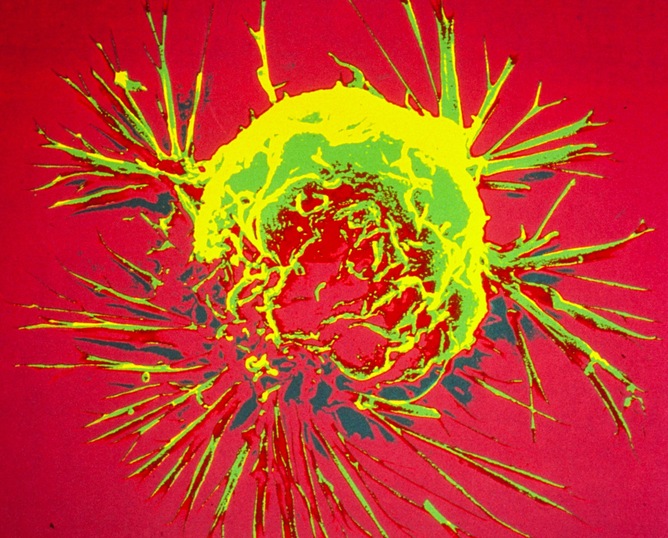
Evolutionary Theory of Cancer Overlooks Genetic Research (Op-Ed)

This article was originally published at The Conversation. The publication contributed the article to LiveScience's Expert Voices: Op-Ed & Insights.
The history of biology is peppered with invaluable contributions by physics and physicists. Even if we leave aside the argument that it’s all just physics anyway, theoretical and practical biology leans heavily on our physics cousins.
So, when two heavy-hitting astrophysicists such as Paul Davies and Charley Lineweaver put forward a unifying theory on the evolutionary origins of cancer, cancer biologists usually take notice.
A history of cross-fertilisation
It’s not difficult to see physics' influence on biology. Erwin Schrödinger’s book What is Life?, for instance, is widely credited with providing a theoretical basis for the storage of genetic information.
James Watson cited it as inspiration for his work with Francis Crick and Rosalind Franklin deciphering the structure of DNA.
The DNA structure was solved using X-ray crystallography, a seminal technique pioneered by father and son physics Nobel laureates William and Lawrence Bragg.
In fact, walk into any modern biology lab and you’ll see researchers using instruments packed with lasers, precision optics, and radiation, and often talking to each other through Wi-Fi – all the fruits of physics.
So, in some ways, it’s a little surprising that more biologists haven’t taken notice of the Davies-Lineweaver theory.
It was first published two years ago in a physics journal and has received widespread press coverage. But it is yet to receive much attention in biology or oncology and has only been cited a few times.
While the theory hasn’t been getting much attention formally, perhaps tellingly, it has received some stinging criticism. I suspect a common response of many biologists, such as PZ Myers, is “they’re physicists, they must know something about this we don’t”.
Something old, something new?
Davies and Lineweaver’s theory says cancer represents an evolutionary throwback or “atavism”. They suggest that cancer cells are under the control of an ancient genetic program linked to the earliest multicellular organisms, or metazoans.
Organisms such as sea sponges and jellyfish are probably the closest living examples of primitive metazoa.
The idea that cancer represents some kind of devolutionary state is not new. All the way back to Theodore Boveri early last century, researchers have recognised that tumour cells resemble those seen early in embryonic development.
And more recent molecular evidence tells us that many of the genetic pathways controlling early development are re-activated in tumours.
This line of thinking on the evolutionary basis of cancer has already driven the development of several classes of drugs aimed at remodelling the genetic program of cancer cells.
Indeed, the genomic revolution has given new life to our understanding of cancer’s evolution, with important insights into mechanisms of disease progression and drug resistance.

So, the most perplexing aspect of the Davies-Lineweaver theory is that it’s not particularly new. Indeed, it seems hauntingly reminiscent of the infamous example of a medical student “rediscovering” calculus.
Another limitation of the theory is the idea that early metazoa represent tumour-like growths. There’s simply no evidence for this premise.
Cancer cells are dysfunctional by definition, and we can see evidence of this at many levels. Early metazoa do not possess these “hallmarks” of a tumour.
Testing the waters
The basis of any scientific theory is to provide testable predictions based on evidence. And the atavism theory also falls short on this measure.
If cancers are running some kind of primitive genetic program, we should be able to see evidence of this program in both tumour cells and primitive metazoans. While we are drowning in a flood of information about tumour genomes, we don’t yet have much genomic data on early metazoa to compare against.
Indeed, testable predictions are pretty hard to find in the theory, but there has been a cheeky suggestion that an obvious one would be to take a tumour and drop it in the ocean.
If it really is a throw-back to some early metazoan life-form such as jellyfish or sea sponge, it should have no problem surviving.
Anyone who has ever spent time trying to keep tumour cells alive in a lab to study them will tell you it’s not that simple.
Not quite there yet
Many researchers probably still hold on to somewhat romantic notions of a universal basis for treating cancer, as hinted at by Davies and Lineweaver. But the avalanche of genomic and functional evidence is taking us in the opposite direction.
Genomics is providing ever deeper insights into tumour biology, and the deeper we look, the more complicated the picture appears.
Each patient’s disease is different, and everyone responds differently to treatment. Cancer treatment is embracing this heterogeneity, with ever-more personalised treatments.
The contribution of physics to understanding and treatment of cancer is already immeasurable. As outsiders, Davies and Lineweaver have arrived very quickly at a theoretical understanding of cancer built on decades of research.
Davies even jokes that his main qualification for cancer research is that he is unencumbered by any prior knowledge of the subject. It brings Isaac Newton’s famous words about seeing further by standing on the shoulders of giants to mind.
If Davies and Lineweaver can fully exploit their unencumbered position and provide a truly disruptive insight into cancer, their next leap of logic could be worth watching out for. But the evidence will need to be extraordinary.
Darren Saunders receives funding from the National Health and Medical Research Council, NSW Office of Science and Medical Research, and the Mostyn Family Foundation.
This article was originally published at The Conversation. Read the original article. The views expressed are those of the author and do not necessarily reflect the views of the publisher. This version of the article was originally published on LiveScience.
Sign up for the Live Science daily newsletter now
Get the world’s most fascinating discoveries delivered straight to your inbox.










